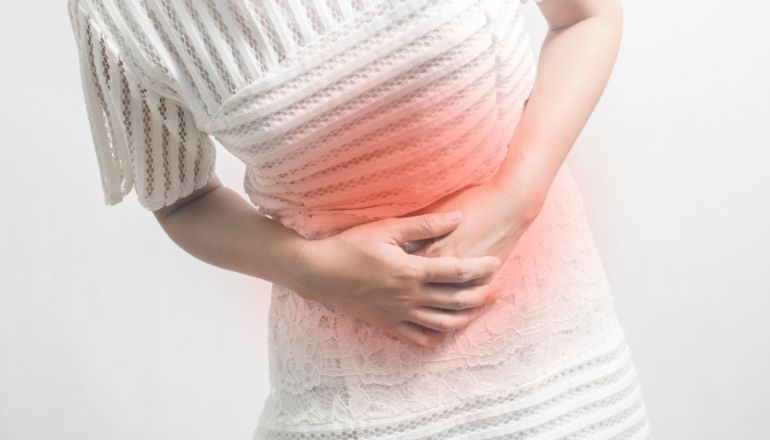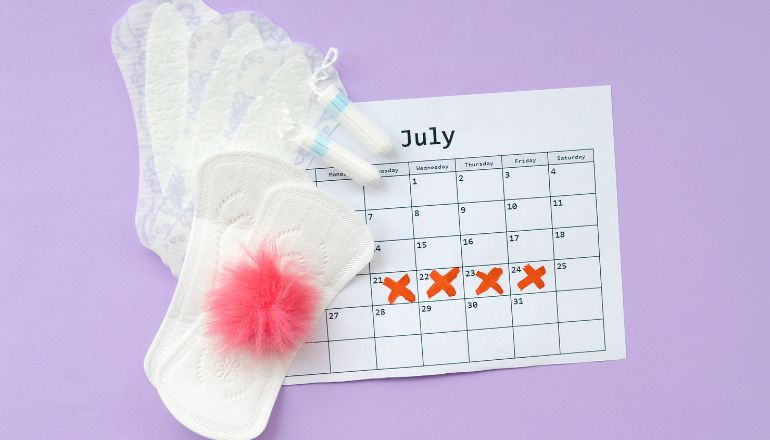Author:
Dr.Navitha Aziz (Specialist Gynecologist) Some women go through their monthly cycles easily with hardly any problems. Their periods are very consistent, starting and stopping at nearly the same time every month, causing little or no trouble. However, for some, it becomes so bothersome that it affects their physical and emotional wellbeing to a very great extent.
Dr.Navitha Aziz (Specialist Gynecologist) Some women go through their monthly cycles easily with hardly any problems. Their periods are very consistent, starting and stopping at nearly the same time every month, causing little or no trouble. However, for some, it becomes so bothersome that it affects their physical and emotional wellbeing to a very great extent.
When do you call it an irregularity or a problem?
Menstrual disorders are problems that affect a woman physically or mentally during, before, or after her cycle. This ranges from heavy bleeding and missed periods to unmanageable mood swings & severe pain.Periods are a natural, healthy part of a woman’s life. Your menstrual cycle can say a lot about your health.
How does the Menstrual Cycle work?
The menstrual cycle is more than just the period. In fact, the period is just the first phase of the cycle. The menstrual cycle is made up of two cycles that work hand in hand—one happening in the ovaries and one in the uterus. The brain, ovaries, and uterus work together and communicate through hormones (chemical signals sent through the blood from one part of the body to another) to keep the cycle going. But finally what is evident is just the monthly cycles. So any disturbance in this normal phenomenon can tell you a lot about your brain, ovaries – uterus axis as if involves three. A menstrual cycle is considered to begin on the first day of a period and ends when the next cycle starts. For a normal cycle, the average length is 28 days long; however, a cycle can range in length from 21 days to about 35 days. The average menstrual period lasts about five to seven days. A normal menstrual period for one may be different for another. Cycle length is most irregular around the time that girls first start menstruating (menarche) and when women stop menstruating (menopause).Types of Menstrual Disorders
Some of the most common menstrual problems are:- Abnormal uterine bleeding which includes heavy menstrual bleeding, bleeding between periods, long cycles, etc
- Painful periods (dysmenorrhea)
- Absent periods (amenorrhea)
- Premenstrual Syndrome
1. Heavy Menstrual Bleeding
One in five women bleeds so heavily during their periods that they have to put their normal lives on hold just to deal with the heavy blood flow. During a normal menstrual cycle, the average woman loses about 1 ounce (30 mL) of blood and changes her sanitary pads/tampon around 3 to 5 times per day.
Bleeding is considered heavy if it interferes with normal activities. If you have heavy menstrual bleeding you may have to change a tampon or pad every hour, and/or menstrual bleeding lasts longer than 7 days in duration.
Heavy menstrual bleeding can be common at various stages of your life—when you first begin to menstruate and in your late 40s or early 50s, as you get closer to menopause.
If you are past menopause and experience any vaginal bleeding, discuss your symptoms with your doctor immediately. Any vaginal bleeding after menopause isn’t normal and should be evaluated immediately.
2. Heavy menstrual bleeding can be caused by:
- Hormonal imbalances
- Medical conditions
- Structural abnormalities in the uterus, such as polyps or fibroids
- Abnormal pregnancy
- Infections
- Thyroid problems
- Blood clotting disorders such as Von Willebrand’s disease, a mild-to-moderate bleeding disorder
- Idiopathic thrombocytopenic purpura (ITP), is a bleeding disorder characterized by too few platelets in the blood
- Liver or kidney disease
- Certain medications, such as anticoagulant drugs such as Plavix (clopidogrel) or heparin and some synthetic hormones
- Leukemia
- Complications from an IUD
- Fibroids
- Leukemia
- Miscarriage
- An ectopic pregnancy occurs when a fertilized egg begins to grow outside your uterus, typically in your fallopian tubes
Absent Periods
Some may experience the opposite problem of heavy menstrual bleeding—no menstrual periods at all. This condition, called amenorrhea, or the absence of menstruation, is normal before puberty, after menopause, and during pregnancy. If you do not have a monthly period and do not fit into the above-mentioned situation, you need to get evaluated. There are two kinds of amenorrhea:- Primary and
- Secondary
- Stress
- Eating disorders
- Sudden weight gain or loss (excessive exercise, obesity)
- Thyroid abnormalities
- Ovarian cysts
- Pregnancy
- Menopause
- Polycystic ovarian syndrome
- Medical conditions like thyroid problems, increased prolactin level
- Stopping birth control
- Pelvic inflammatory disease (a reproductive infection)
- Premature ovarian failure
- Ovarian cysts
Causes of irregular periods
- Puberty – your periods might be irregular for the first year or two
- Start of the menopause (usually between the ages of 45 and 55)
- Early pregnancy – take a pregnancy test to rule this out
- Some types of hormonal contraception – such as the contraceptive pill or intrauterine system (IUS)
- Extreme weight loss or weight gain, excessive exercise or stress
- Medical conditions – such as polycystic ovary syndrome (PCOS) or a problem with your thyroid
Severe menstrual cramps (dysmenorrhea)
Most women have had menstrual cramps before or during their period in their lives. For some, it’s a regular occurrence. But if your cramps are especially painful and persistent, this is called dysmenorrhea, Pain from menstrual cramps is caused by uterine contractions, triggered by prostaglandins, hormone-like substances that are produced by the uterine lining cells and circulate in your bloodstream. Pain can typically last 12 to 72 hours, and you might have other symptoms, such as nausea and vomiting, fatigue, and even diarrhea. Commonly menstrual cramps may become less painful as you get older.Diagnosis
If you experience any irregularities from the normal pattern of your cycle and it’s persisting for 2-3 cycles you should schedule an appointment with your health care professional. To prepare, keep a diary of the frequency and duration of your periods. Also jot down any additional symptoms, such as cramping, and be prepared to discuss health history. Nowadays there are so many mobile applications available that will help you to track and keep a record of your cycles. History Taking Your medical history is very important to know if your menstrual problem is caused by any medical condition. For example, abdominal pain might be due to appendicitis, urinary tract infections, ectopic pregnancy, and irritable bowel syndrome. Endometriosis and uterine fibroids may cause heavy bleeding and chronic pain. So a detailed history of your cycle, medical condition, family, current medication, sexual history, and contraceptive use will be taken by your doctor. An Abnormal & Pelvic Examination A pelvic exam is a standard part of the diagnosis. A Pap test may be done during this exam. Blood Tests Blood tests can help rule out other conditions that cause menstrual disorders. For example, your doctor may test thyroid function to make sure that low thyroid (hypothyroidism) is not present. Blood tests can also check follicle-stimulating hormone, estrogen, and prolactin levels. A urine test can be done to check if you are pregnant. Women who have heavy bleeding may get tested for anemia if needed for bleeding disorders as well. Ultrasound and Sonohysterography Imaging techniques are often used to detect certain conditions that may be causing menstrual disorders. Ultrasound is the standard imaging technique for evaluating the uterus and ovaries. It can help to detect fibroids, uterine polyps, ovarian cysts, and tumors Transvaginal sonohysterography is ideal in these conditions. Transvaginal sonohysterography uses ultrasound along with a probe (transducer) placed in the vagina. Sometimes saline (salt water) is injected into the uterus to enhance visualization. Other Diagnostic Procedures Endometrial Biopsy When heavy or abnormal bleeding occurs, an endometrial (uterine) biopsy may be performed in the OPD. This procedure can help identify abnormal cells, which suggest that pre-cancer or cancer may be present. It may also help the doctor decide on the best hormonal treatment to use. The procedure is done without anesthesia. Gentle suction removes a sample of the endometrial lining. The tissue collected is examined by a pathologist and is reported- Hysteroscopy
- Dilation and Curettage (D&C)
- Laparoscopy
Treatment for the menstrual irregularities
Treatments range from over-the-counter medications to surgery, with varied treatments in between. Your doctor will suggest your mode of treatment depending on your diagnosis, its severity, your preferences, and your health history. Abnormal uterine bleeding Medication and surgery are the modes to treat Abnormal uterine bleeding. Typically, we start with oral medications. Treatment choices depend on your age, your desire to preserve fertility, and the cause of the abnormal bleeding (dysfunctional or structural). Some treatments may reduce your menstrual bleeding to light to normal flow. Medication Medication therapy is often successful and a good first option. The benefits last only as long as the medication is taken, so it might be a long-term commitment. Tranexamic acid or ethamsylate (haemostatic drugs), has been used successfully to decrease heavy menstrual bleeding. These tablets are only taken on the days you expect to have heavy bleeding Nonsteroidal anti-inflammatory drugs (NSAIDs) are over the counter and can help reduce menstrual bleeding and cramping. These medications include ibuprofen naproxen, and Mefenamic acid. Common side effects include stomach upset, headaches, dizziness, and drowsiness. Hormonal Treatments Low-dose birth control pills and progestins may help control heavy or irregular bleeding caused by hormonal imbalances. If your periods have stopped, oral contraceptives are highly effective in restoring regular bleeding. Both can also help reduce menstrual flow, improve and control menstrual patterns and relieve pelvic pain during menstruation. Medications that contain the synthetic estrogen, are the first birth control pill FDA-approved for the treatment of heavy menstrual bleeding due to hormonal imbalance. The combination estrogen-progesterone pill has additional for contraception as well. Birth control pills may not be an appropriate treatment choice if you smoke, or have a history of pulmonary embolism (blood clots in your lungs). So talk to your doctor about your habits. Progestrogens another hormone, either oral or injectable, are also used to manage heavy bleeding, particularly that resulting from a lack of ovulation. Although they don’t work as well as estrogen, they are effective for long-term management. Side effects include irregular menstrual bleeding, weight gain, and sometimes, mood changes. The levonorgestrel intrauterine system (Mirena) is FDA-approved to treat heavy menstrual bleeding in women who use intrauterine contraception as their method of birth control prevention. The Mirena system may be kept in place for up to five years. Over this time, it slowly releases a low dose of the progestin hormone levonorgestrel into the uterus. Mirena is also referred to as an intrauterine. Surgery Surgical options for heavy menstrual bleeding depend on whether you desire to retain your uterus or not. Hysterectomy is the surgical treatment of removing your uterus. Other options are those that retain your uterus but treat by removing the endometrial lining. However, these might affect your fertility. Risks common to all surgical options include infection, bleeding, etc. Mentioning a few options- Endometrial ablation
- Endometrial resection
- Dilation and curettage (D&C)
- Myomectomy








